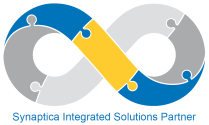I spent last week in a sunny Berlin for the Berlin Buzzwords event (and subsequently MICES 2018, of which more later). This was my first visit to Buzzwords which was held in an arts & culture complex in an old brewery north of the city centre. The event was larger than I was expecting at around 550 people with three main tracks of talks. Although due to some external meetings I didn’t attend as many talks as I would have liked, here are a few highlights. Many of the talks have slides provided and some are now also available on the Buzzwords Youtube channel.
Giovanni Fernandez-Kincade talked about query understanding to improve both recall and precision for searches. He made the point that users and documents often speak very different languages which can lead to a lack of confidence in the search engine. Various techniques are available to attempt to translate the user’s intention into a suitable query and these can be placed on a spectrum from human-powered (e.g. creating an exception list to prevent stemming of proper nouns) to some degree of automation (e.g. harvesting data to build lists of synonyms) to fully automation (machine learning of how queries map to documents). Obviously these also fit on other scales from labour-intensive to hands-off and easy to hard in terms of the technology skills required. This talk gave a solid base understanding of the techniques available.
I dropped in on Suneel Marthi’s talk on detecting tulip fields from satellite images, which was fascinating although outside my usual area of search engine technology. I then heard Nick Burch describe the many ways that text extraction powered by Apache Tika can crash your JVM or even your entire cluster (potentially expensive in an elastically-scaling situation as more resources are automatically allocated!). As he recommended one should expect failure and plan accordingly, ship logs somewhere central for analysis and never run Tika inside your Solr instance itself in a production system (a recommendation that has finally made it to the Solr Wiki). Doug Turnbull and Tommaso Teofili then spoke on The Neural Search Frontier, a wide-ranging and in some places somewhat speculative discussion of techniques to improve ranking using word embeddings described by multidimensional vectors. This approach combined traditional IR techniques with neural models to learn whether a document is relevant to a query. One fascinating idea was the use of recurrent neural networks, much used in translation applications, to ‘translate’ a document to a predicted query. As with most of Doug’s talks this gave us a lot to think about but he finished with a plea for better native vector support in Lucene-based search engines.
The next talk I heard was from Varun Thacker on Solr autoscaling which I know is a particular concern of some of our clients as their data volumes grow. These new features in Solr version 7 allow policies and preferences to be set up to govern autoscaling behaviour, where shards may be moved and new cores created automatically based on metrics such as disk space or queries-per-second. One interesting line of questioning from the audience was how to avoid replicas from ‘ping ponging’ between hosts – e.g moving from a node with low disk space to one with more disk space, but then causing a reduction in disk space on the target node, leading to another move. Usefully the autoscaling system can be set to compute a list of operations but leave execution to a human operator, which may help prevent this problem.
The next day I attended Tomás Fernández Löbbe’s talk on new replica types in Solr 7, which talked about the advantages of the ‘Master/Slave’ model for search cluster design as opposed to the standard SolrCloud ‘every node does everything’ model. The new replica types PULL and TLOG allow one to build a master/slave setup in SolrCloud, separating responsibility for indexing and searching and even choosing which type of replica to use in queries. I also heard Houston Putman talk about data analytics with Solr, describing how built-in Solr functions can carry out the type of analytics previously only possible with Apache Spark or Hadoop and avoiding the extra cost of shipping data out of Solr. Unfortunately that was the end of my conference due to some other commitments but it was great to catch up with various search people from Europe and further abroad and to enjoy what was a well-organised and interesting event.














